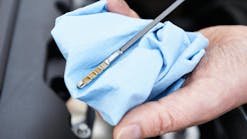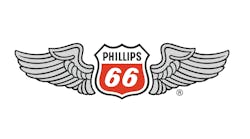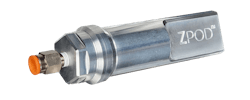Houston, TX – April 14, 2015 - 2015 marks the 50th anniversary of Biobor JF®, one of aviation’s benchmark innovations. In 1965, the McDonald Douglas DC-9 was making its debut as the first commercial jetliner with a two man cockpit crew, and air travel was growing by leaps and bounds. Along with aircraft innovation was news of another debut that threatened the safety and financial success of this and other commercial jets. Persistent contamination by microbial growth, which resulted in extensive wing tank corrosion, was serious enough to threaten grounding the DC-9 fleet. Experts from all sides rushed to fully understand the source of the contamination in all jet powered aircraft, how it manifested itself and why it seemed to be worse in the DC-9. SOHIO Petroleum delivered the solution with a product that had its origins as a gasoline performance additive used to formulate SOHIO’s Boron premium automobile gasoline. Parallel research at the time confirmed that not only did Biobor® improve performance in gasoline, it had an added benefit of sterilizing the water bottoms of fuel tanks, protecting them from the ravages of run-away microbial contamination and corrosion to fuel system components caused by acidic microbial waste.
It was discovered that the DC-9 had areas in the wing tanks that failed to fully drain accumulated water back to the sump supporting what would later be referred to as “hydrocarbon utilizing micro-organisms” or HUM Bugs. This type of organism needs three elements to multiply exponentially: fuel as a nutrient, water for hydration and a temperature above 70° F. Commercial aircraft, particularly the DC-9 provided an ideal breeding ground for HUM bugs. Fuel tanks (called wet wings) made of aluminum conduct radiant heat from the sun and experience constant transitions from high altitude cold to high temperatures on the ground producing a steady supply of water from condensation. Having water, fuel and intermittent temperatures above 70°, the perfect storm was in place to support reoccurring contamination. Biobor®, later designated Biobor JF®, saved the day by treating both the fuel and water phase of aircraft fuel in a unique manner. By altering the way a microbe metabolizes food, and by treating not only the sump water, but all the fuel as the bug’s food source, Biobor JF® provided a continuous kill and preventative measure against future outbreaks.
As a result of these early discoveries with the DC-9, DC-10 and other commercial turbine aircraft, Biobor JF® became the first biocide tested and approved by airlines, aircraft and engine manufactures and the FAA for the treatment and prevention of microbial contamination in aviation fuels. Since microbial contamination can interrupt fuel supplies causing rapid and unexpected engine failure and cause major structural damage to an aircraft, it is easy to see how Biobor JF® has played a major role in protecting the lives of millions of airline passengers while dramatically reducing maintenance costs of commercial airliners. Today, fuels rely even more on Biobor JF® since it is the only biocide that not only fights microbial growth, but replaces lubricity lost in ultra-low sulfur fuel. After 50 years, Biobor JF® continues to be the most recognized and recommended biocide for all hydrocarbon fuels, bio fuels, transmission and hydraulic fluids, and other hydrocarbon fluids.
About BIOBOR JF® and Hammonds Fuel Additives, Inc.: The Hammonds Companies are a world leading manufacturer of aviation, diesel and gasoline fuel additives and fuel additive injection systems. Their flagship products, Biobor JF®, has maintained its role as the industry leading biocide for jet fuel and diesel since 1965, and has uniquely positioned itself with numerous OEM turbine and airframe manufacturer recommendations. Hammonds Fuel Additives also produces a complete line of aviation fuel treatments to cover the varying requirements of military, private, rotor and commercial aviation customers. Hammonds Technical Services is the producer of the most widely used aviation additive injection systems, worldwide. With over 10,000 installations across the globe, Hammonds fluid powered injection systems are the most dependable and accurate units serving the aviation fueling market.


